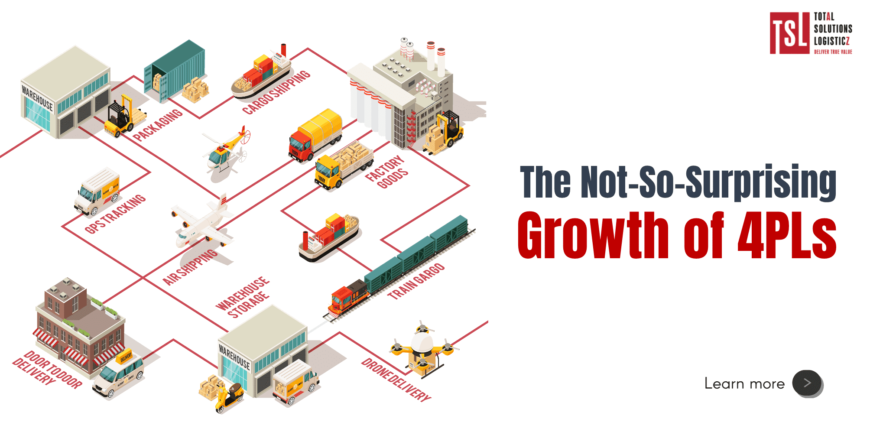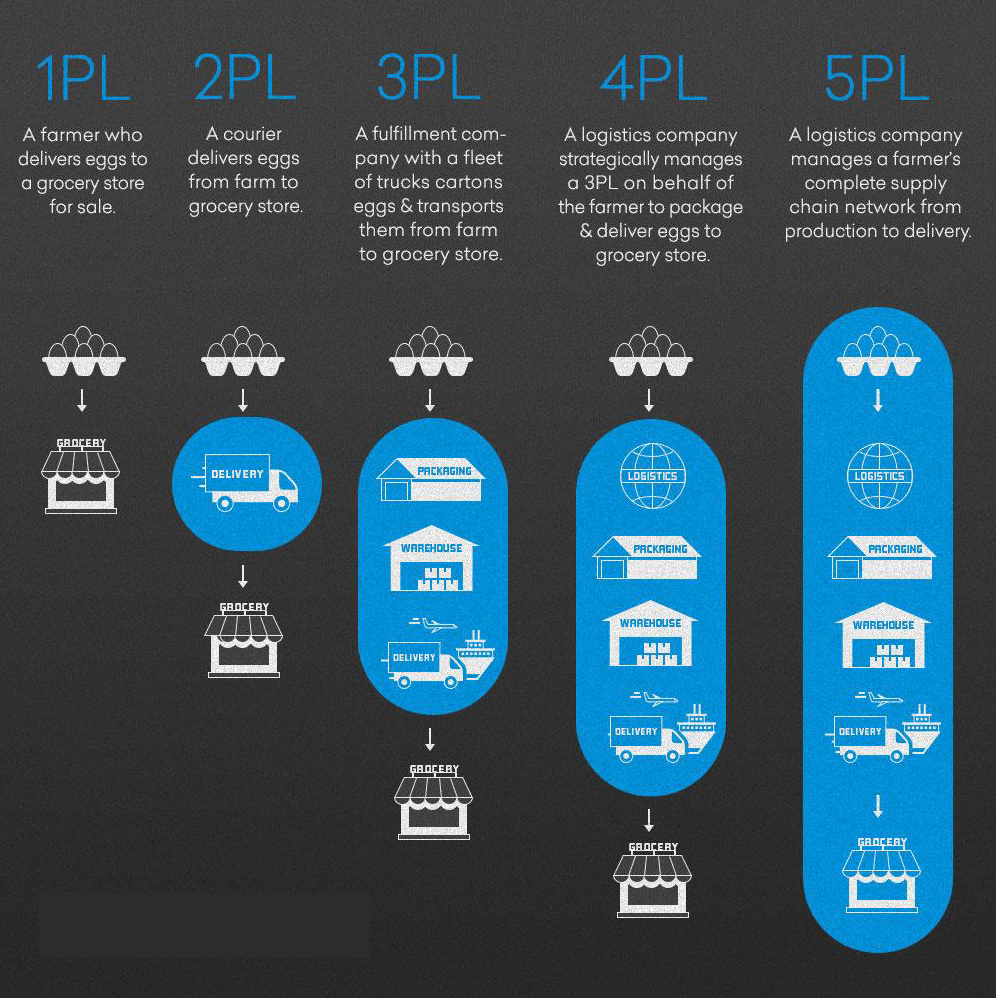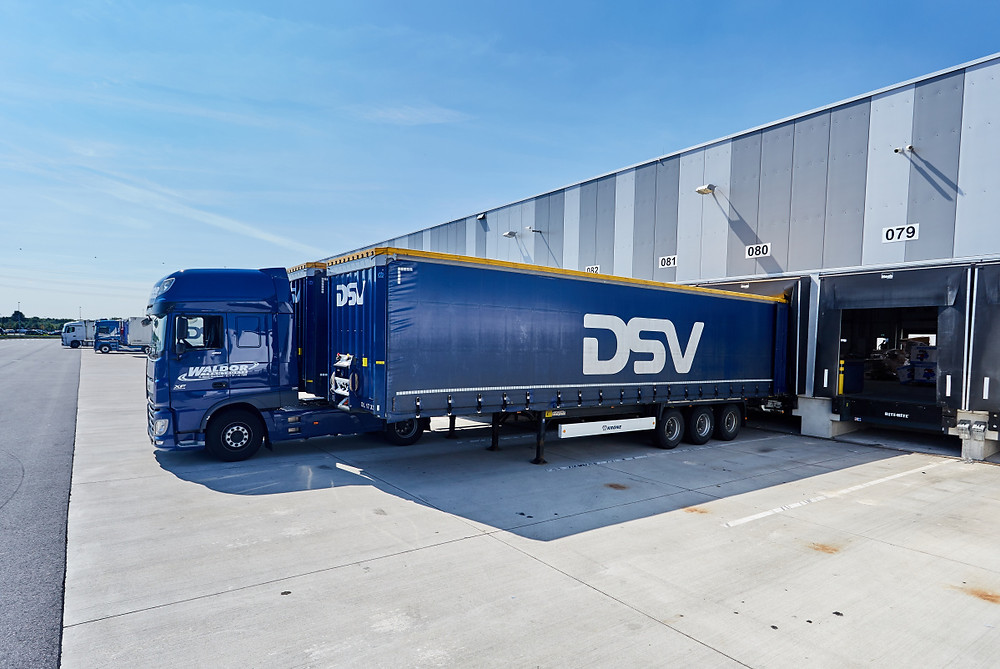The Not-So-Surprising Growth of 4PLs
The COVID-19 pandemic changed just about every facet of our personal and professional lives, but its impact has been especially dramatic for logistics professionals. After two years of product shortages, port closures and other supply chain challenges, everyone understands the critical nature of logistics.
In addition to raising general awareness of the logistics field, the pandemic changed many of its fundamental practices. One of the big changes we’ve witnessed is an increasing reliance on fourth-party logistics (4PL) providers to manage increasingly complex global supply chains. According to Polaris Market research, the worldwide 4PL market, valued at $49.84 billion in 2021, is predicted to reach $89.95 billion by 2030 as more companies seek a single supplier to provide turnkey management of all their supply chain and operational tasks.
Concept of type of logistics services 4PLs
4PL (Fourth Logistics Service Provider or Distribution Chain Logistics, or Leading Logistics Provider – LPL) is the one who merges and connects its resources, potential and technical facilities with organizations other organizations to design, build and operate logistics chain solutions. 4PL is the management and implementation of complex logistics activities such as resource management, control center coordination, architecture functions & integration of logistics activities.
4PL is related to 3PL, developed on the foundation of 3PL but includes a broader field of activity such as 3PL activities, Information Technology Services and Business Process Management. 4PL is considered as a single point of contact, a place to perform the management, aggregation of all resources and supervision of 3PL functions throughout the distribution chain to reach the global market, strategic advantage. and lasting relationships. 4PL differs from 3PL in the following points:
- 4PL organizations act as the link between customers and many logistics service providers.
- The organization of this Enterprise is usually a separate entity formed by a joint venture or long-term contract between a customer and one or more partners.
- A large 3PL can establish a 4PL within its existing structure.
- Ideally, all aspects of the customer supply chain are managed by a 4PL organization.
Why is the growth of 4PLs not surprising?
Recently, I hosted a Blue Yonder LinkedIn Live event on 4PL trends that featured Amlan Bose, Vice President of Digital Transformation at DSV, as well as Richard Ryan, Senior Director for Industries at Blue Yonder. Called “How 4PL Services Can Help Up the Game in the Omni-Channel World,” this event looked at the growth in the worldwide 4PL market over the past two years, as well as the reasons behind it. DSV, a Blue Yonder customer, reported an impressive 59% growth in revenue and 71% growth in operating profit in 2021.
A Straightforward Solution to a Complex Problem
It turns out that the rapid growth of 4PL isn’t so surprising when you think about it. Fourth-party logistics providers offer a single, expert source for managing end-to-end logistics for a range of customers. As one example, manufacturers may find it easier, and more profitable, to focus on their core competency of making products — turning over the storage, transportation and distribution of those products to an expert logistics provider like DSV, the fourth largest 4PL in the world.
“This market is changing very, very fast,” said Blue Yonder’s Richard Ryan. “What we see happening after COVID-19, after the boom of e-commerce, is that more logistics providers are trying to offer a real end-to-end solution. They’re taking care of the ocean freight, the air freight and the terrestrial freight — really managing product movements from the beginning of the journey to the end.”
As the events of the past two years revealed the vulnerabilities of complex, geographically dispersed global supply chains, many companies are taking a close look at the inherent risks of this model. But 4PLs help lend stability and make extended supply chains viable, even in uncertain supply and demand conditions.
“When the supply becomes very big and very complex, you really need an independent eye, a neutral eye, to watch the whole system,” explains Amlan Bose of DSV. “A dedicated 4PL can use its expertise to deliver the most efficient logistics, the most efficient supply chain, the best costs and the best performance metrics. They function as a thought center that can optimize logistics, detect and address issues, and guide and coach the 3PL network.”
Large-Scale Operations Deliver Big Customer Benefits
Due to their clear focus and their large scale, 4PLs offer a number of obvious benefits. “Not only are freight costs rising, but shipping resources are becoming scarce,” Ryan points out. “Because 4PLs aggregate many customers, they have a better chance of securing capacity and transportation lanes, as well as negotiating the lowest possible rates. In today’s logistics market, those capabilities are very much in demand.”
Bose notes that 4PLs also have access to the most advanced logistics technology solutions, supported by artificial intelligence (AI), machine learning (ML), digital control towers and predictive analytics.
“We have invested in digital transformative tools, including Blue Yonder’s transportation management solution and Luminate Control Tower,” said Bose.
“Once you have global best-in-class tools and standardized processes, now you have the opportunity to create a logistics center of excellence. So you don’t have multiple teams covering multiple regions, but one centralized nerve center that does logistics at scale, driving huge value for customers,” Bose continues. “At DSV, our whole focus is on exploiting the power and potential of AI and ML in more and more areas of the supply chain — with the end goal of generating value for our global customer network.”
4PLs Reap the Rewards of Digitalization
In addition to supporting higher levels of customer value, Ryan notes that the digitalization efforts of the world’s 4PLs, including DSV, are generating enormous financial rewards for the providers themselves.
“Many 4PLs are realizing growth as demand for their services takes off,” says Ryan, “but the companies that are really leading-edge have seen their valuations multiplied by three or even by four times. The older companies that are not pursuing digitalization may be seeing sales growth and an increase in business, but their costs are also growing because they’re not making the real-time, optimized decisions that digitalization enables.”
Bose points out that DSV has reduced its investments in staff and physical facilities thanks to digitalization, amplifying its financial return on digital solutions. “Digitalization is not just converting your manual process to automation, but making a real paradigm shift,” he emphasizes.
Bose continues. “Thanks to digitalization, what we’re seeing now is that the 4PL industry is moving toward a non brick-and-mortar model. You don’t need to have someone sitting somewhere in an office managing global logistics. Everything is digital, it’s happening in apps and in the cloud. And that is enabling not only profitable growth, but greater speed and agility as we serve our customers.”
Source: Blue Yonder
Reference:











